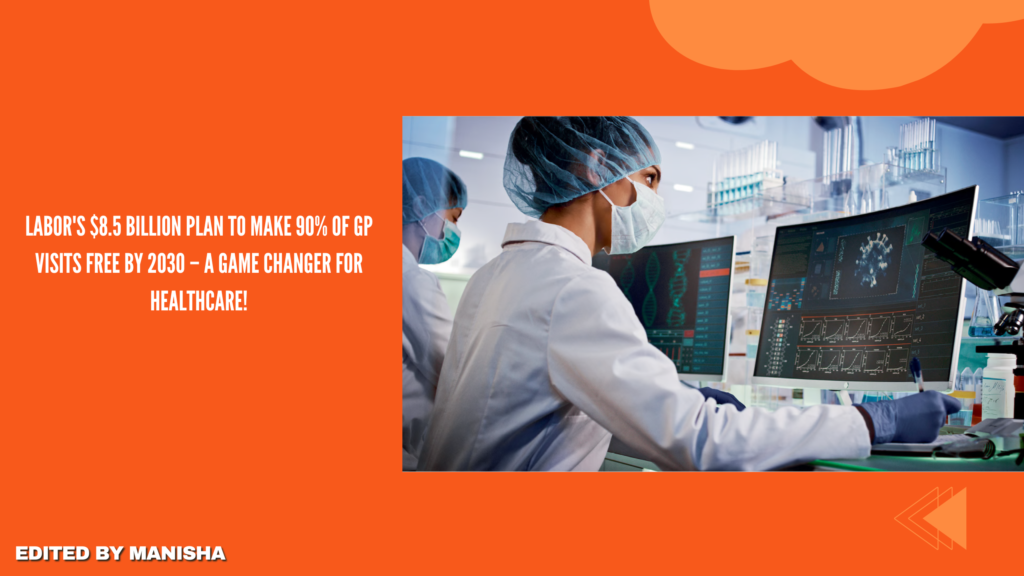
Labor has promised to make nine out of 10 GP visits free from out-of-pocket expenses by 2030 as part of a major pre-election commitment aimed at alleviating the financial strain of healthcare for voters. This proposal is framed as the largest single investment in Medicare since its creation more than 40 years ago, with a $8.5 billion funding plan over four years. The money will be used to significantly increase incentives for doctors to provide bulk-billing services, aiming to make GP visits accessible to a broader section of the population.
In addition to 18 million more bulk-billed GP visits annually, Labor is pledging to fund 400 nursing scholarships and add 2,000 new GP trainees per year by 2028. The government insists that this plan, which will be funded without raising taxes or making cuts elsewhere, represents a key part of Labor’s healthcare agenda. Prime Minister Anthony Albanese emphasized that Australians should not need their credit card to afford necessary healthcare, reinforcing that a Medicare card should be all that’s needed for medical care.
The promise of expanded bulk-billing is particularly relevant to families and younger Australians, who have increasingly delayed doctor visits due to upfront costs. One report from the Australian Bureau of Statistics notes that 8.8% of GP visits are delayed because of these financial barriers, and the percentage of young people in their 20s avoiding doctor visits due to cost has tripled in the past three years.
However, the success of this plan will depend on whether doctors, especially in metropolitan areas with higher living costs, accept the proposed incentives. According to the Royal Australian College of GPs, the current bulk-billing rate is about 77.5%, and they are working on a strategy to return the rate to pre-COVID levels.
The government’s proposal goes beyond the Australian Medical Association’s calls for expanding free GP visits to anyone under 35, but it does not address doctors’ concerns about the overall Medicare rebate, which some argue is insufficient to cover the cost of more time-consuming consultations like those for mental health care.
Labor’s plan includes increasing Medicare rebates from $42.85 to $69.56 for standard consultations in cities, and up to $86.91 in rural areas. The rebates will be raised by an additional 12.5% for practices that commit to bulk-billing only. With these changes, the government aims to see the number of fully bulk-billed GP practices grow from around 7,000–8,000 to 4,800 over the next five years.
By 2030, patients are expected to save approximately $859 million annually in out-of-pocket expenses. The bulk-billing expansion will begin in November if Labor is re-elected, with the cost to taxpayers starting at $1.1 billion in 2025-26 and increasing to $2.4 billion in 2028-29, totaling $8.5 billion over four years.
This package is expected to make 90% of GP visits bulk-billed by 2030, with the promise including 80 federally funded urgent care clinics. As of December, 77.5% of GP visits were bulk-billed, and the government hopes to maintain and increase that rate with these changes.
In 2023, Labor tripled the bulk-billing incentive for children under 16, pensioners, and concession cardholders. Speculation has been growing that Labor would introduce more cost-of-living relief before the next federal election, which is due by May 17. Albanese is expected to present the bulk-billing proposal at a rally in Launceston, where he will contrast Labor’s commitment to Medicare with the Coalition’s position, which Albanese claims could erode Medicare’s foundation.
Health Minister Mark Butler criticized Opposition Leader Peter Dutton for attempting to end bulk-billing with a co-payment in 2014 and freezing Medicare rebates for six years. The Coalition rejects these claims, pointing to the increase in bulk-billing rates from 82.5% in 2013 to 88.5% in 2022 before the decline to 77.5% since then. The government believes that without action, this rate will continue to drop.